| Western blot (WB): | 1:500-2000 |
| Immunohistochemistry (IHC): | 1:50-400 |
| Immunocytochemistry/Immunofluorescence (ICC/IF): | 1:50-400 |
| Flow Cytometry (Fixed): | 1:50-200 |
| (Boiling the paraffin sections in 10mM citrate buffer,pH6.0,or PH8.0 EDTA repair liquid for 20 mins is required for the staining of formalin/paraffin sections.) Optimal working dilutions must be determined by end user. | |

Figure 1. Western blot analysis of VEGF Receptor 3 using anti-VEGF Receptor 3 antibody (A01276-2). Lane 1: human Hela whole cell lysates,Lane 2: human MCF-7 whole cell lysates,Lane 3: human HepG2 whole cell lysates. anti-VEGF Receptor 3 antigen affinity purified polyclonal antibody (Catalog # A01276-2)probed with a goat anti-rabbit IgG-HRP secondary antibody The signal is developed using an Enhanced Chemiluminescent detection (ECL) kit (Catalog # EK1002) . A specific band was detected for VEGF Receptor 3 at approximately 153KD. The expected band size for VEGF Receptor 3 is at 153KD.
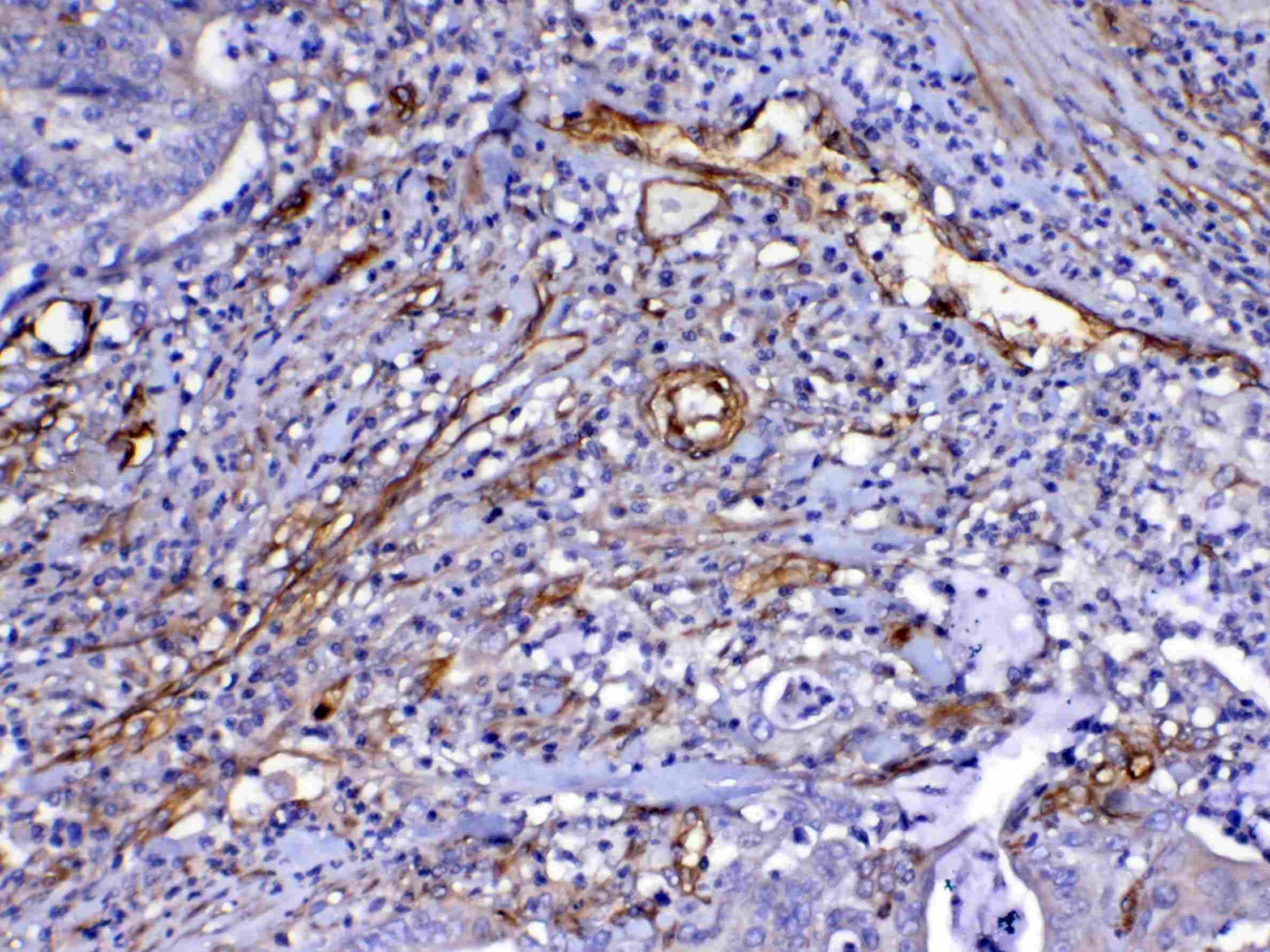
Figure 2. IHC analysis of VEGF Receptor 3 using anti-VEGF Receptor 3 antibody (A01276-2).VEGF Receptor 3 was detected in paraffin-embedded section of human colon cancer tissue. anti-VEGF Receptor 3 Antibody (A01276-2) . Biotinylated goat anti-rabbit IgG was used as secondary antibody . The tissue section was developed using Strepavidin-Biotin-Complex (SABC)(Catalog # SA1022) with DAB as the chromogen.

Figure 3. IHC analysis of VEGF Receptor 3 using anti-VEGF Receptor 3 antibody (A01276-2).VEGF Receptor 3 was detected in paraffin-embedded section of human lung cancer tissue. anti-VEGF Receptor 3 Antibody (A01276-2) . Biotinylated goat anti-rabbit IgG was used as secondary antibody . The tissue section was developed using Strepavidin-Biotin-Complex (SABC)(Catalog # SA1022) with DAB as the chromogen.
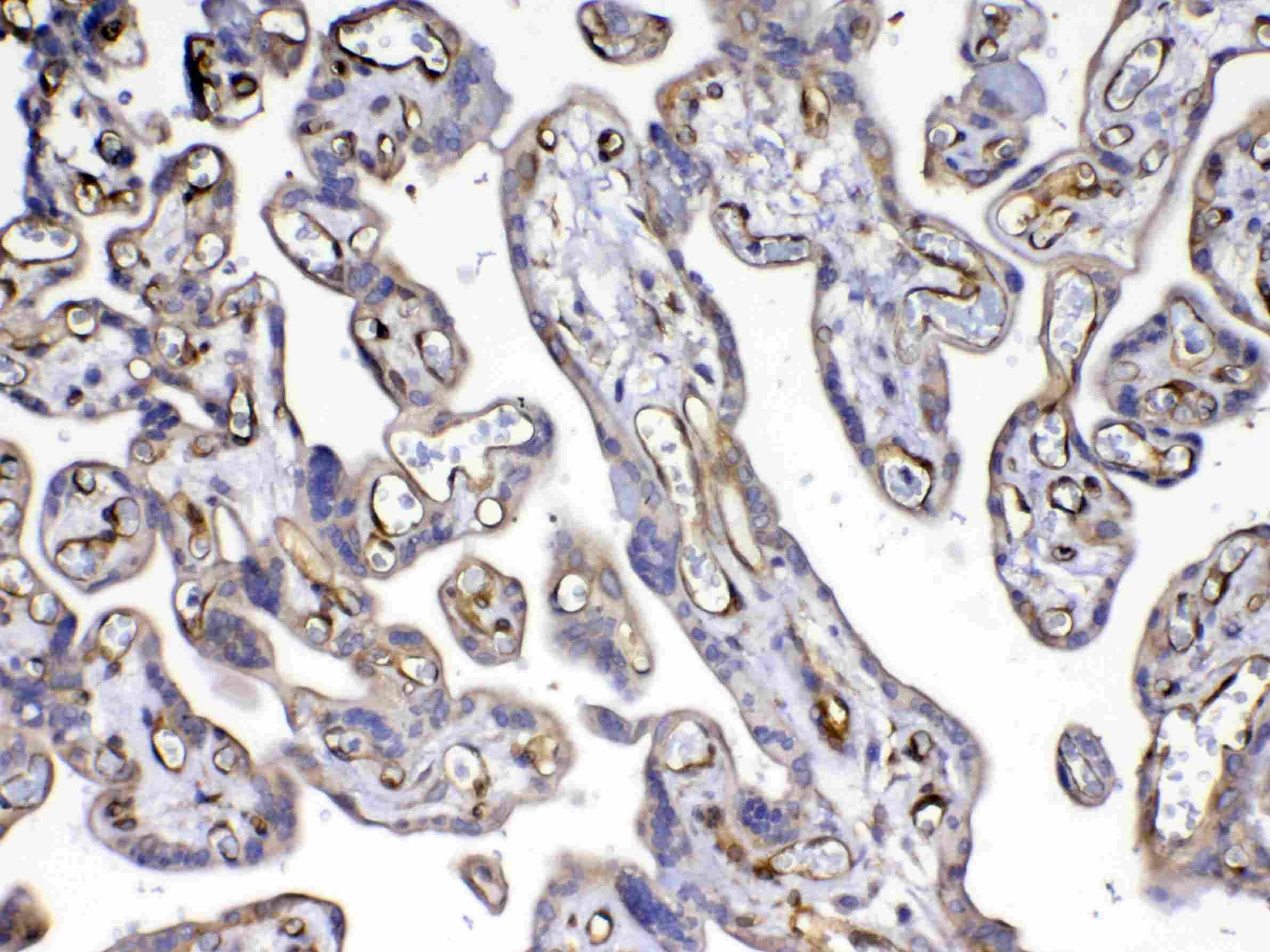
Figure 4. IHC analysis of VEGF Receptor 3 using anti-VEGF Receptor 3 antibody (A01276-2).VEGF Receptor 3 was detected in paraffin-embedded section of human placenta tissue. anti-VEGF Receptor 3 Antibody (A01276-2) . Biotinylated goat anti-rabbit IgG was used as secondary antibody . The tissue section was developed using Strepavidin-Biotin-Complex (SABC)(Catalog # SA1022) with DAB as the chromogen.
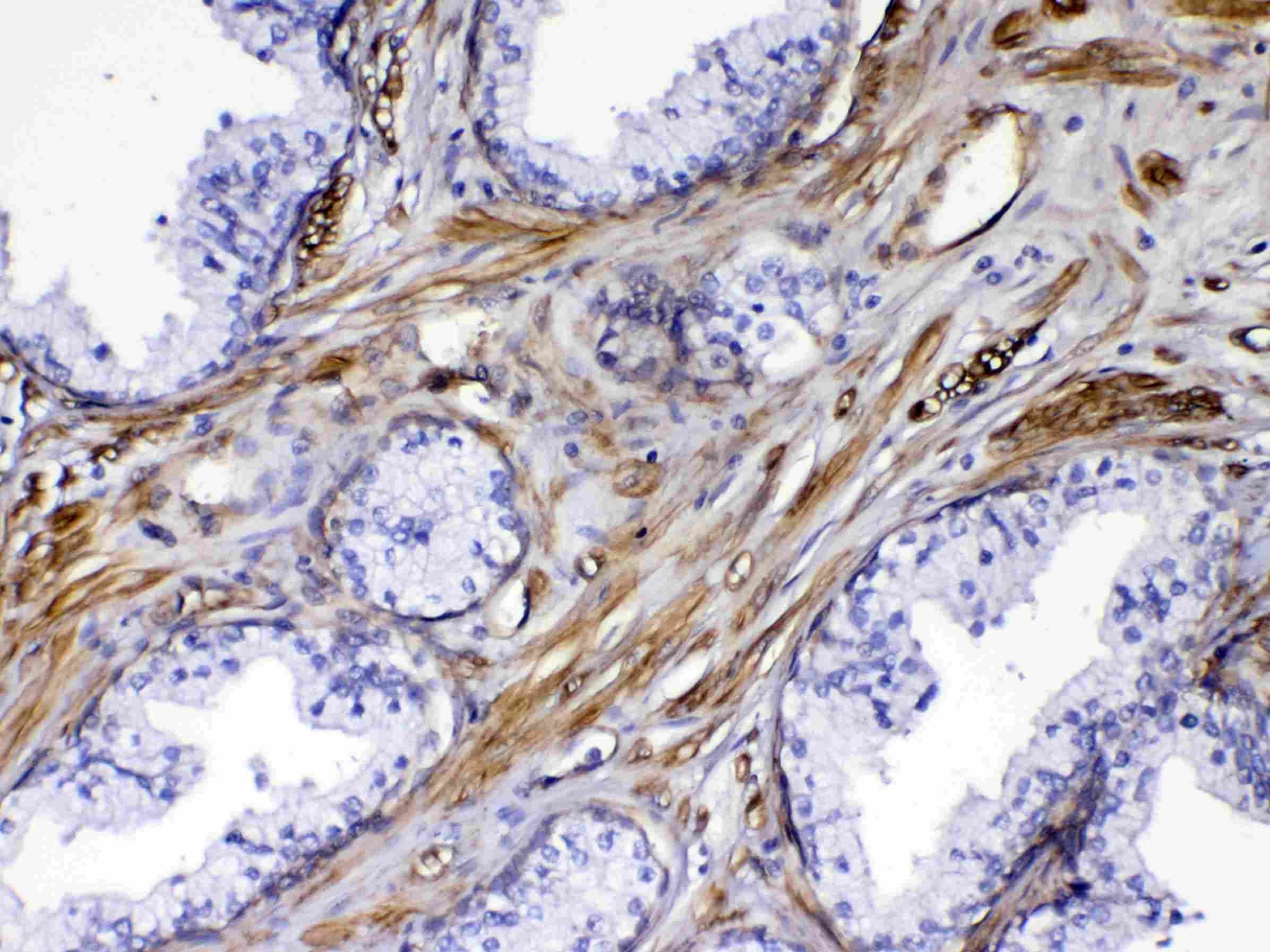
Figure 5. IHC analysis of VEGF Receptor 3 using anti-VEGF Receptor 3 antibody (A01276-2).VEGF Receptor 3 was detected in paraffin-embedded section of human prostatic cancer tissue. Biotinylated goat anti-rabbit IgG was used as secondary antibody . The tissue section was developed using Strepavidin-Biotin-Complex (SABC)(Catalog # SA1022) with DAB as the chromogen.
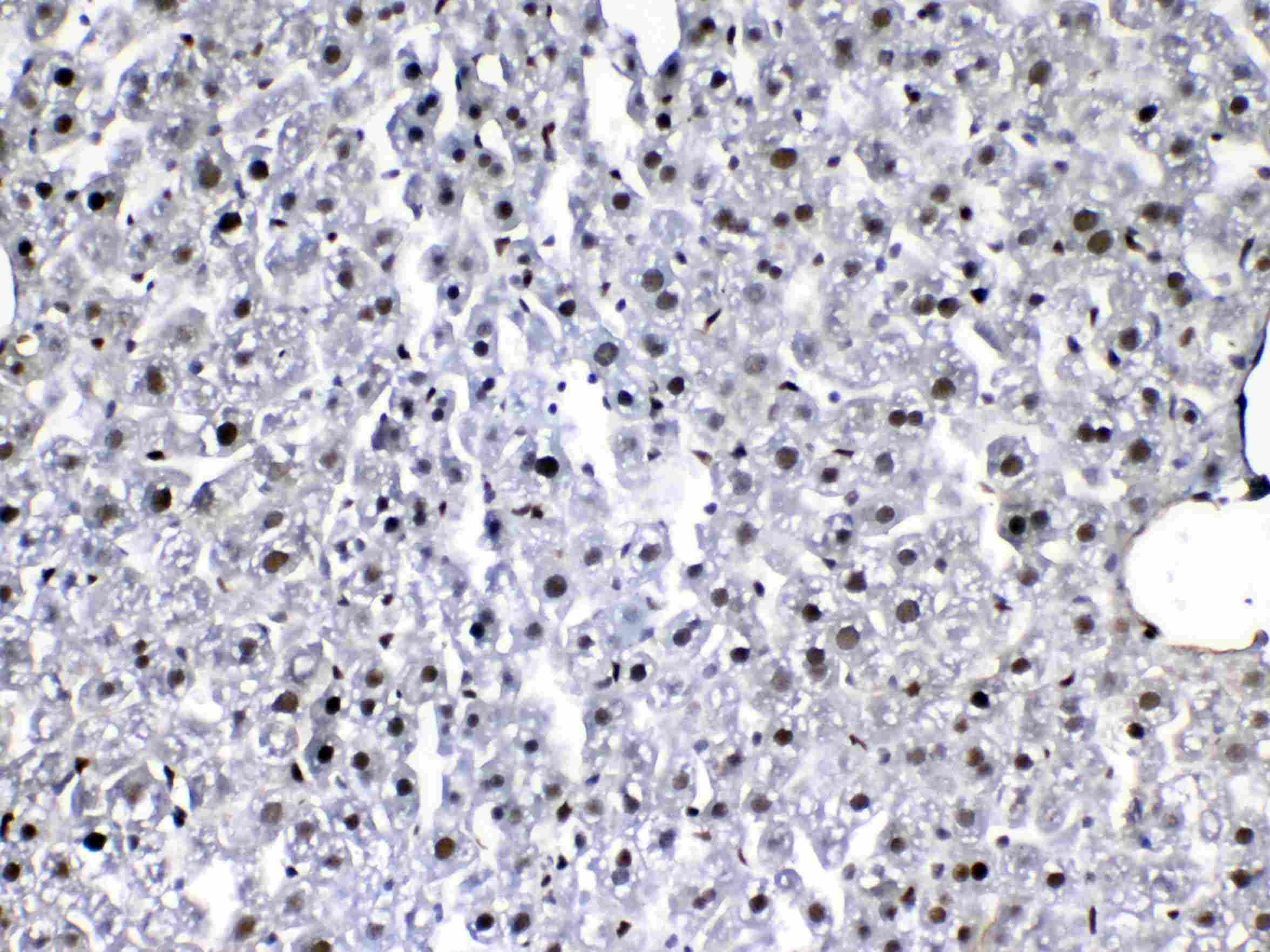
Figure 6. IHC analysis of VEGF Receptor 3 using anti-VEGF Receptor 3 antibody (A01276-2).VEGF Receptor 3 was detected in paraffin-embedded section of mouse liver tissue. Biotinylated goat anti-rabbit IgG was used as secondary antibody . The tissue section was developed using Strepavidin-Biotin-Complex (SABC)(Catalog # SA1022) with DAB as the chromogen.
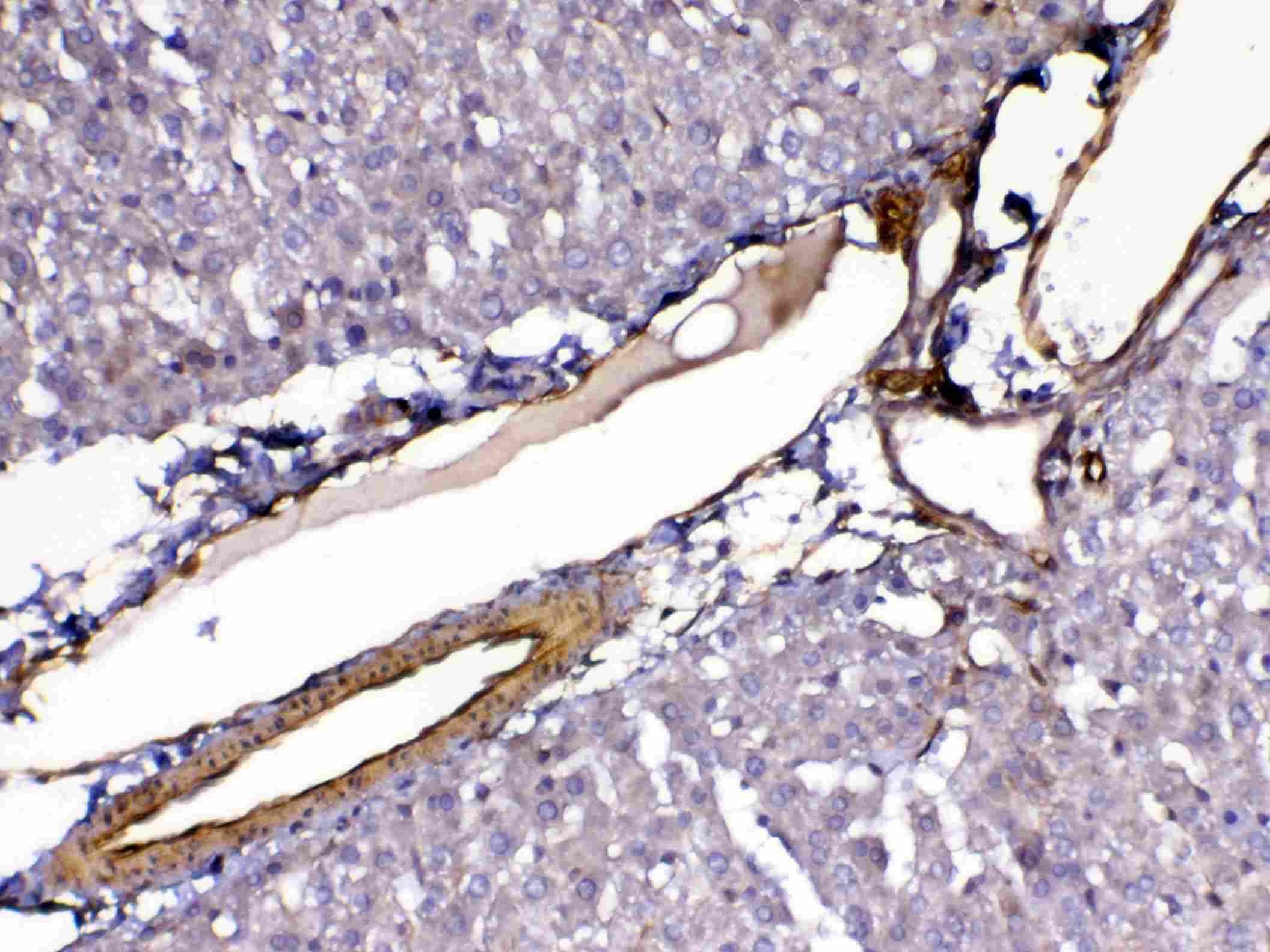
Figure 7. IHC analysis of VEGF Receptor 3 using anti-VEGF Receptor 3 antibody (A01276-2).VEGF Receptor 3 was detected in paraffin-embedded section of rat liver tissue. . Biotinylated goat anti-rabbit IgG was used as secondary antibody . The tissue section was developed using Strepavidin-Biotin-Complex (SABC)(Catalog # SA1022) with DAB as the chromogen.
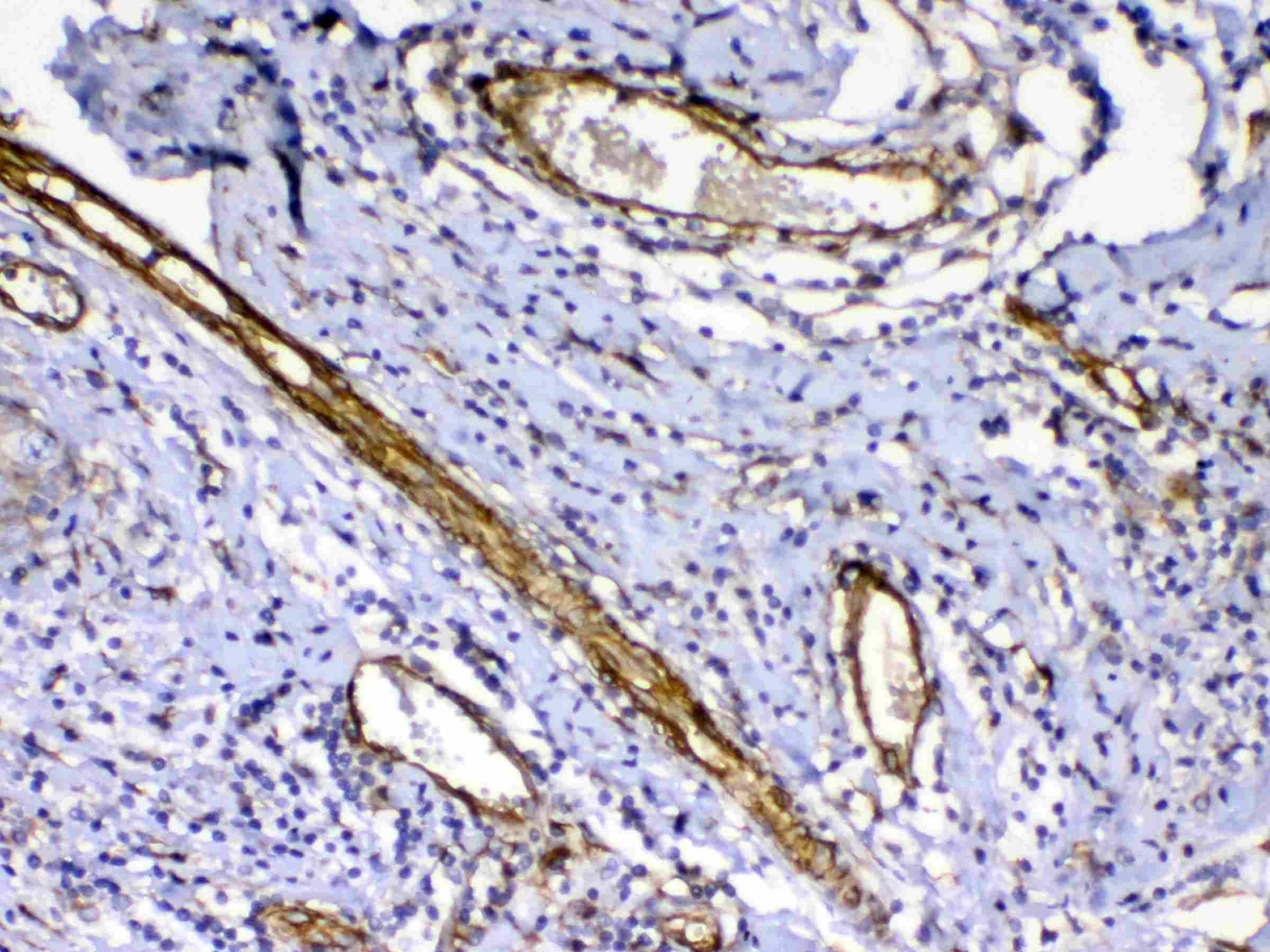
Figure 8. IHC analysis of VEGF Receptor 3 using anti-VEGF Receptor 3 antibody (A01276-2).VEGF Receptor 3 was detected in paraffin-embedded section of human mammary cancer tissue. anti-VEGF Receptor 3 Antibody (A01276-2) . Biotinylated goat anti-rabbit IgG was used as secondary antibody . The tissue section was developed using Strepavidin-Biotin-Complex (SABC)(Catalog # SA1022) with DAB as the chromogen.
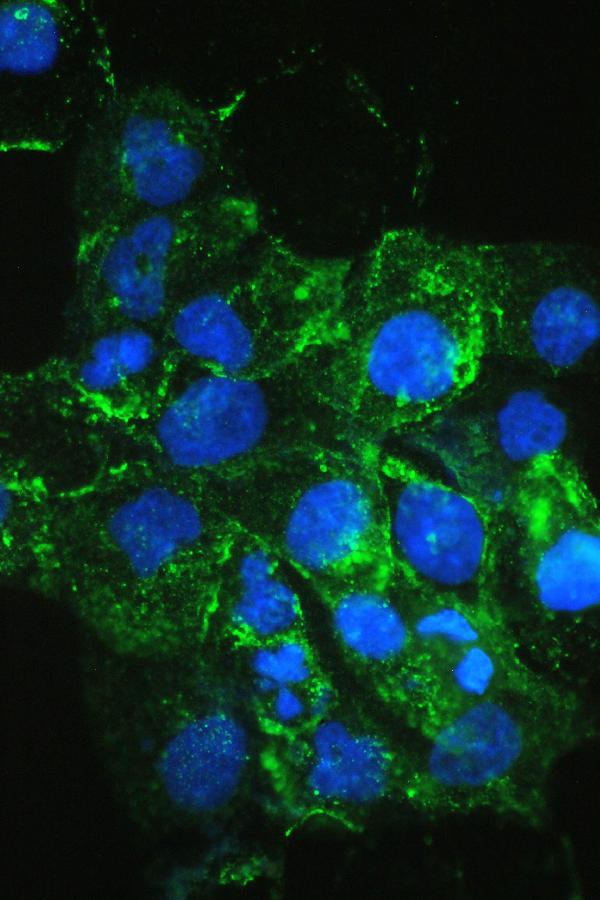
Figure 9. IF analysis of VEGF Receptor 3 using anti- VEGF Receptor 3 antibody (A01276-2).
VEGF Receptor 3 was detected in immunocytochemical section of A431 cell. Enzyme antigen retrieval was performed using IHC enzyme antigen retrieval reagent (AR0022) DyLight488 Conjugated Goat Anti-Rabbit IgG (BA1127) was used as secondary antibody The section was counterstained with DAPI. Visualize using a fluorescence microscope and filter sets appropriate for the label used.

Figure 10. Flow Cytometry analysis of U2OS cells using anti- VEGF Receptor 3 antibody (A01276-2). Overlay histogram showing U2OS cells stained with A01276-2 (Blue line). DyLight488 conjugated goat anti-rabbit IgG (BA1127, 1:100) was used as secondary antibody . Isotype control antibody (Green line) was rabbit IgG (1:100) used under the same conditions. Unlabelled sample (Red line) was also used as a control.

Figure 1. Western blot analysis of VEGF Receptor 3 using anti-VEGF Receptor 3 antibody (A01276-2). Lane 1: human Hela whole cell lysates,Lane 2: human MCF-7 whole cell lysates,Lane 3: human HepG2 whole cell lysates. anti-VEGF Receptor 3 antigen affinity purified polyclonal antibody (Catalog # A01276-2)probed with a goat anti-rabbit IgG-HRP secondary antibody The signal is developed using an Enhanced Chemiluminescent detection (ECL) kit (Catalog # EK1002) . A specific band was detected for VEGF Receptor 3 at approximately 153KD. The expected band size for VEGF Receptor 3 is at 153KD.

Figure 2. IHC analysis of VEGF Receptor 3 using anti-VEGF Receptor 3 antibody (A01276-2).VEGF Receptor 3 was detected in paraffin-embedded section of human colon cancer tissue. anti-VEGF Receptor 3 Antibody (A01276-2) . Biotinylated goat anti-rabbit IgG was used as secondary antibody . The tissue section was developed using Strepavidin-Biotin-Complex (SABC)(Catalog # SA1022) with DAB as the chromogen.

Figure 3. IHC analysis of VEGF Receptor 3 using anti-VEGF Receptor 3 antibody (A01276-2).VEGF Receptor 3 was detected in paraffin-embedded section of human lung cancer tissue. anti-VEGF Receptor 3 Antibody (A01276-2) . Biotinylated goat anti-rabbit IgG was used as secondary antibody . The tissue section was developed using Strepavidin-Biotin-Complex (SABC)(Catalog # SA1022) with DAB as the chromogen.

Figure 4. IHC analysis of VEGF Receptor 3 using anti-VEGF Receptor 3 antibody (A01276-2).VEGF Receptor 3 was detected in paraffin-embedded section of human placenta tissue. anti-VEGF Receptor 3 Antibody (A01276-2) . Biotinylated goat anti-rabbit IgG was used as secondary antibody . The tissue section was developed using Strepavidin-Biotin-Complex (SABC)(Catalog # SA1022) with DAB as the chromogen.

Figure 5. IHC analysis of VEGF Receptor 3 using anti-VEGF Receptor 3 antibody (A01276-2).VEGF Receptor 3 was detected in paraffin-embedded section of human prostatic cancer tissue. Biotinylated goat anti-rabbit IgG was used as secondary antibody . The tissue section was developed using Strepavidin-Biotin-Complex (SABC)(Catalog # SA1022) with DAB as the chromogen.

Figure 6. IHC analysis of VEGF Receptor 3 using anti-VEGF Receptor 3 antibody (A01276-2).VEGF Receptor 3 was detected in paraffin-embedded section of mouse liver tissue. Biotinylated goat anti-rabbit IgG was used as secondary antibody . The tissue section was developed using Strepavidin-Biotin-Complex (SABC)(Catalog # SA1022) with DAB as the chromogen.

Figure 7. IHC analysis of VEGF Receptor 3 using anti-VEGF Receptor 3 antibody (A01276-2).VEGF Receptor 3 was detected in paraffin-embedded section of rat liver tissue. . Biotinylated goat anti-rabbit IgG was used as secondary antibody . The tissue section was developed using Strepavidin-Biotin-Complex (SABC)(Catalog # SA1022) with DAB as the chromogen.

Figure 8. IHC analysis of VEGF Receptor 3 using anti-VEGF Receptor 3 antibody (A01276-2).VEGF Receptor 3 was detected in paraffin-embedded section of human mammary cancer tissue. anti-VEGF Receptor 3 Antibody (A01276-2) . Biotinylated goat anti-rabbit IgG was used as secondary antibody . The tissue section was developed using Strepavidin-Biotin-Complex (SABC)(Catalog # SA1022) with DAB as the chromogen.

Figure 9. IF analysis of VEGF Receptor 3 using anti- VEGF Receptor 3 antibody (A01276-2).
VEGF Receptor 3 was detected in immunocytochemical section of A431 cell. Enzyme antigen retrieval was performed using IHC enzyme antigen retrieval reagent (AR0022) DyLight488 Conjugated Goat Anti-Rabbit IgG (BA1127) was used as secondary antibody The section was counterstained with DAPI. Visualize using a fluorescence microscope and filter sets appropriate for the label used.

Figure 10. Flow Cytometry analysis of U2OS cells using anti- VEGF Receptor 3 antibody (A01276-2). Overlay histogram showing U2OS cells stained with A01276-2 (Blue line). DyLight488 conjugated goat anti-rabbit IgG (BA1127, 1:100) was used as secondary antibody . Isotype control antibody (Green line) was rabbit IgG (1:100) used under the same conditions. Unlabelled sample (Red line) was also used as a control.









